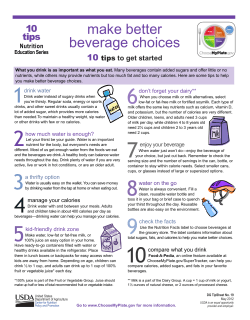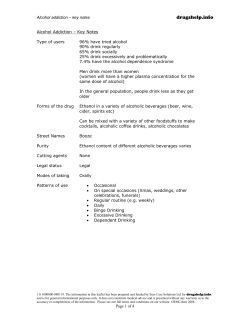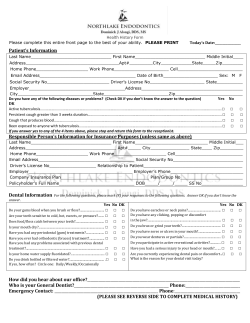
Exercise/Walking - Healthy Campbell
90-Day Health Challenge EXERCISE NUTRITION HEALTHY MIND 1st 30-Days: Exercise and Drinking Water Steps for Better Health Launch Date: April 12, 2015; 9:00 a.m. Launch Event: Group Walk at Campbell Park/Los Gatos Trail Gilman Ave, Campbell, CA 95008 April 12 to April 21 Each day, log at least 10 to 15 minutes of walking/exercise and drink adequate water through out the day; Total of 100 to 150 minutes of walking/exercise. My Personal Goal___________________________________________________ April 22 to May 1 Each day, log at least 15 to 20 minutes of walking/exercise and drink adequate water through out the day; Total of 150 to 200 minutes of walking/exercise. My Personal Goal___________________________________________________ May 2 to May 11 Each day, log at least 20 to 25 minutes of walking/exercise and drink adequate water through out the day; Total of 200 to 250 minutes of walking/exercise. My Personal Goal___________________________________________________ Challenge Goal: Total of 450 to 600 minutes of walking/exercise for the 1st 30 days; Continue the walk/exercise as you add the 2nd and 3rd phase of your 90-Day Challenge. Water Needs What you drink is just as important as what you eat. Many beverages contain added sugars and offer little or no nutrients, while others may provide nutrients but too much fat and too many calories. When you’re thirsty, drink water instead of sugary drinks. Sugary drinks usually provide more calories than need. Drinking water can help you manage your calories. On average, about 400 calories in sugary beverages are consumed daily by adults and children. How Much Sugar is in Your Drink? Soda 20 oz Orange Drink 16 oz calories Teaspoons of Sugar 250 17 260 15 Sweetened Tea Drink 20 oz 220 30 Big juice pouch 11.25 oz 152 9.5 Sports Drink 20 oz 140 9 Water 0 0 How to calculate how much sugar is in a container: Calculation: • • • Grams of sugar (divided) / 4 = Teaspoons of sugar Example: for a 20 oz soda (69 grams /4 = 17 teaspoons) If the container has more than one serving, multiply the number of teaspoons by the number of servings to get the total teaspoons of sugar in the container. You can make a difference in your health by committing to drinking water. Benefits of Drinking Water • • • • • • • • • • Thirst quenching Contains no calories, fat, cholesterol, or caffeine, and is low in sodium Prevents dehydration Regulates body temperature Reduces fluid retention Carries nutrients and oxygen to the cells Provides moisture to skin and other tissues Helps prevent constipation Cushions joints Helps strengthen muscles How Much Water is Needed Water is an important nutrient for the body, but everyone’s needs are different. In general, one quart of water is needed daily for every 50 pounds of body weight. The exact amount of water needed depends on many factors including: age; gender; weight; health; and level of physical activity. In general, you can calculate your daily water intake by taking your weight in pounds dividing it by 2, and converting to ounces. • Example: 160 pounds divided by 2 = 80 oz. Your daily water intake will be measured in ounces. Tips for Drinking More Water • • • • • • • • Drink a glass of water as soon as you get up each day. Every morning, fill a 64-‐ounce to 96-‐ounce container with water for the day. When you drink all the water in the container, you have met your daily water need of 8 to 12 cups. Add slices of lemon, lime or orange to water for a hint of flavor. Enjoy water breaks instead of coffee or tea breaks. Take water bottles with you to work and when running errands. Keep a cup of water on your desk to sip on as you work. When passing a water fountain, stop and take a drink. Drink water before, every 15 minutes during, and after physical activity. Sources: United States Department of Agriculture. Nutritional Education Series. DG Tipsheet No. 19. United States Department of Agriculture. National Agriculture Library. Fluid Needs, Clemson University: http://fnic.nal.usda.gov/consumers/eating-‐health/water-‐and-‐fluid-‐needs
© Copyright 2025











